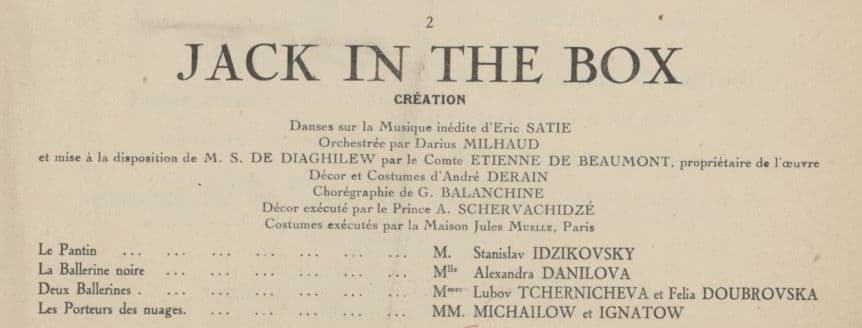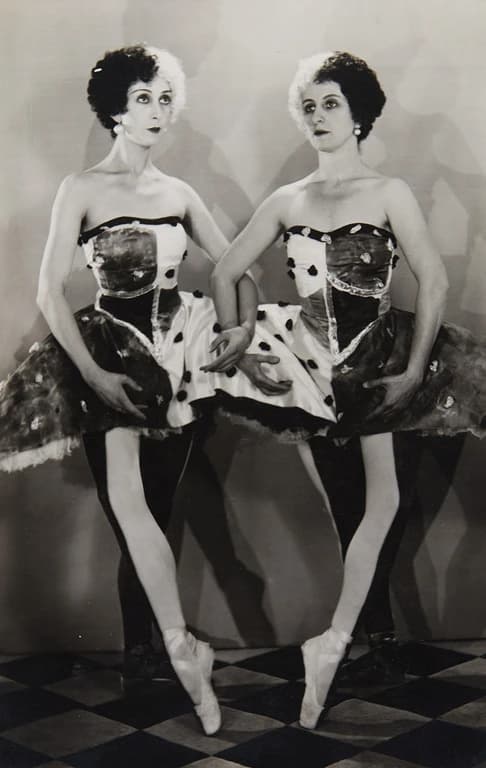In 1899, Erik Satie (1866–1925) wrote a little pantomime ballet for piano entitled Jack in the Box to a scenario by the illustrator Jules Depaquit, an artist who was his very good friend and known for his love of hoaxes. The scenario hasn’t survived, and Satie believed that the music had been left on a bus and was missing. However, after Satie’s death in 1925, the score was found in his apartment – one story has that it was found in a notebook stuffed down the back of his piano.
It was orchestrated by Darius Milhaud, who, as one historian noted, was one of the few friends with whom Satie never quarreled, and was made into a ballet for Diaghilev. The scenery and costumes were by André Derain, and the choreography was by George Balanchine.

Program: Théatre Sarah-Bernhardt, 3 June 1926, for Jack in the Box, detail (Gallica, ark:/12148/btv1b8415176c)
In its 1926 presentation, since the original storyline was lost, the work seems to have been made into a series of dances and wasn’t based on a particular story or theme.

Man Ray: Lubov Tchernicheva and Felia Doubrovska in Jack in the Box, 1926 for Vogue
The 1926 presentation of Jack in the Box occurred at a gala in memory of Satie on what would have been his 60th birthday and also included his best-known ballet, Parade, along with Stravinsky’s Les Noces and Petroushka.
The program indicated that the unpublished music was owned by Count Étienne de Beaumont, a wealthy aristocratic patron who was important in encouraging Man Ray to branch into portrait photography (see below), supported Diaghilev’s Ballet Russes, and ballets including Satie’s Parade, and Cocteau’s Le Boeuf due le toit.

Man Ray: Count Étienne de Beaumont, 1925 (Curitaba, Brazil: Oscar Niemeyer Museum)
The ballet has three short movements, starting with the Prélude. What you hear immediately is the humour and bounce in the music.
Erik Satie: Jack in the Box (orch. D. Milhaud) – Prelude (Utah Symphony Orchestra; Maurice Abravanel, cond.)
The music is all in C major and except for changes in rhythms and harmonies, seems to be more about movement than musical statements.
Erik Satie: Jack in the Box (orch. D. Milhaud) – Entr’Act (Utah Symphony Orchestra; Maurice Abravanel, cond.)
The Final seems like it could serve equally well for a film about a busy city! The constant time changes keep us off balance…just the way Satie seemed to like the world!
Erik Satie: Jack in the Box (orch. D. Milhaud) – Final (Utah Symphony Orchestra; Maurice Abravanel, cond.)
It’s a curious remnant of Satie’s Bohemian beginnings and, as reconstructed nearly 30 years after he composed it, has become a new work again.
For more of the best in classical music, sign up for our E-Newsletter
